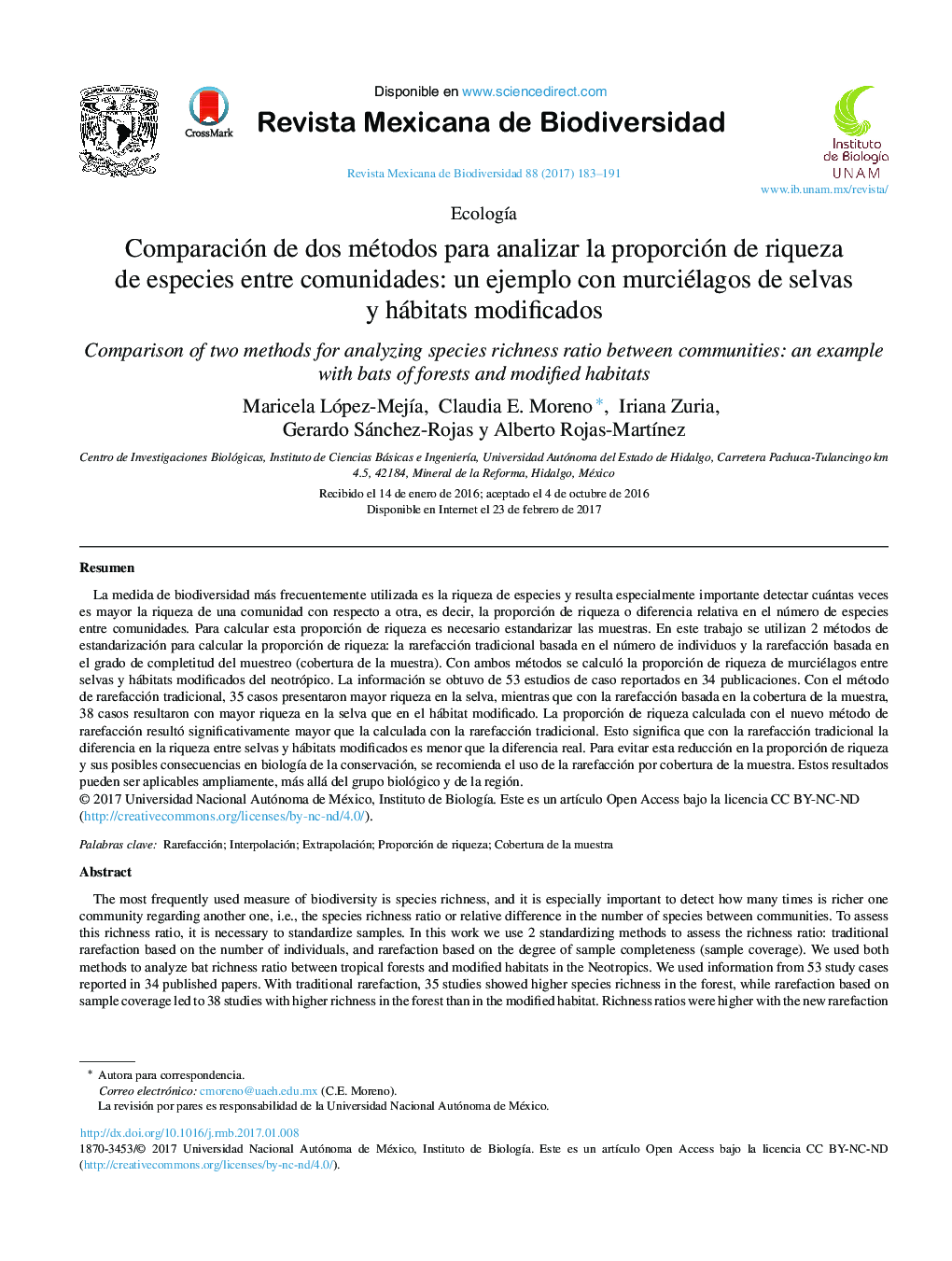| Article ID | Journal | Published Year | Pages | File Type |
|---|---|---|---|---|
| 8867094 | Revista Mexicana de Biodiversidad | 2017 | 9 Pages |
Abstract
The most frequently used measure of biodiversity is species richness, and it is especially important to detect how many times is richer one community regarding another one, i.e., the species richness ratio or relative difference in the number of species between communities. To assess this richness ratio, it is necessary to standardize samples. In this work we use 2 standardizing methods to assess the richness ratio: traditional rarefaction based on the number of individuals, and rarefaction based on the degree of sample completeness (sample coverage). We used both methods to analyze bat richness ratio between tropical forests and modified habitats in the Neotropics. We used information from 53 study cases reported in 34 published papers. With traditional rarefaction, 35 studies showed higher species richness in the forest, while rarefaction based on sample coverage led to 38 studies with higher richness in the forest than in the modified habitat. Richness ratios were higher with the new rarefaction method than with the traditional rarefaction. This means that traditional rarefaction gives a richness difference between forest and modified habitats lower than the real difference. To avoid this reduction in richness ratios, and its possible consequences in conservation biology, it would be better to use sample coverage based rarefaction. These results can be widely applicable, beyond the study group and the region.
Related Topics
Life Sciences
Agricultural and Biological Sciences
Animal Science and Zoology
Authors
Maricela López-MejÃa, Claudia E. Moreno, Iriana Zuria, Gerardo Sánchez-Rojas, Alberto Rojas-MartÃnez,
